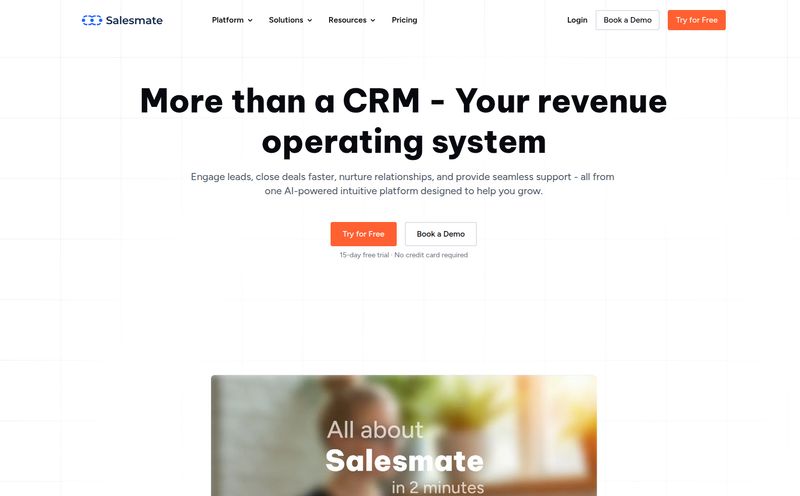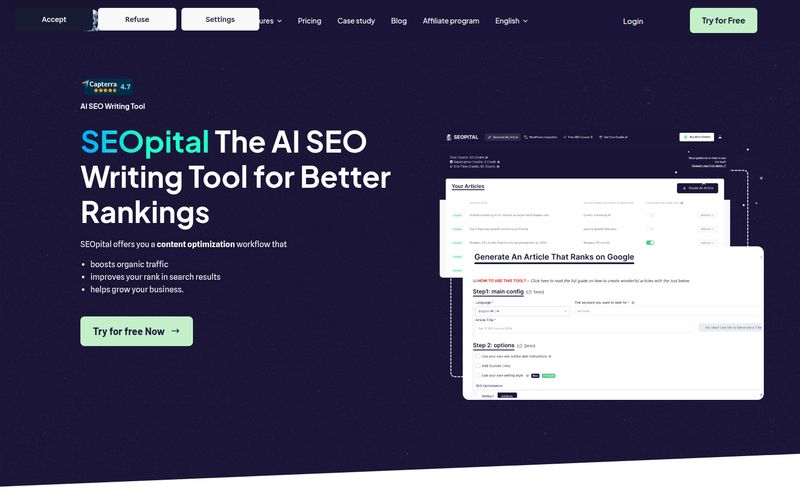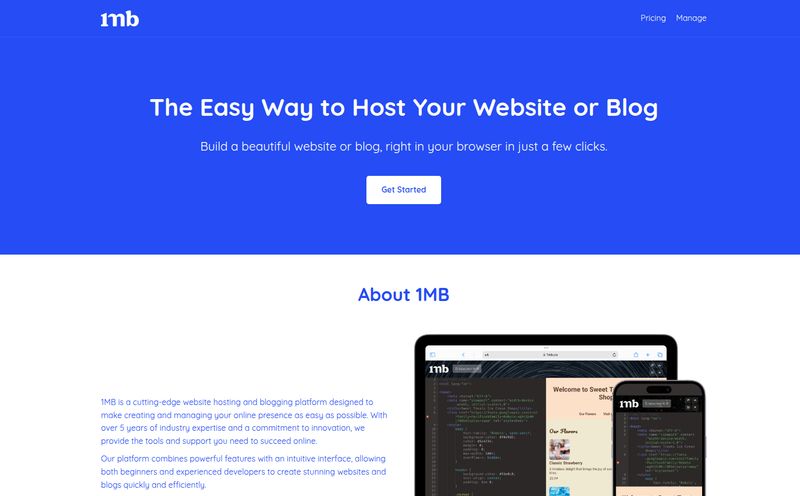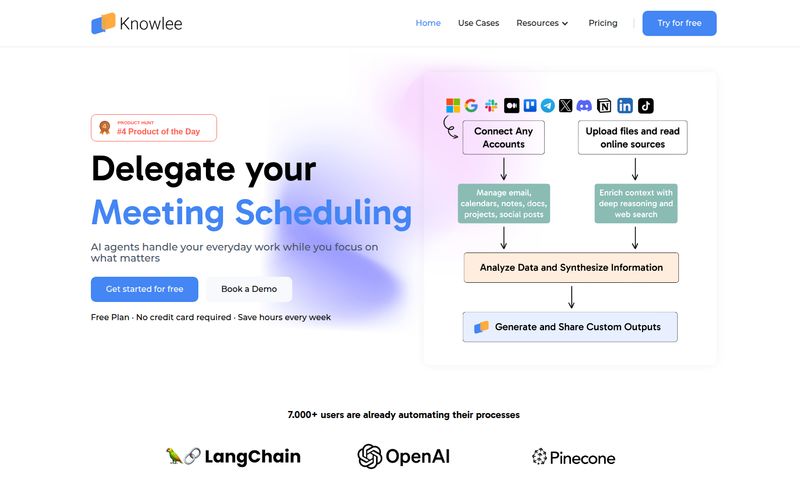I’ve been in those marketing meetings. You know the ones. The admissions department has one microsite, the Faculty of Arts has another, and the engineering school’s website looks like it was built in 1998. It’s a mess of conflicting branding, broken links, and overworked IT departments who just want everyone to stop asking for new landing pages. It's digital spaghetti, and for years, universities and schools have just been adding more noodles to the bowl.
Every so often, a tool pops up that promises to fix it all. To be the one platform to rule them all. Today, we're talking about one of those: Griddo. It bills itself as a "Digital Experience Platform" (DXP) built exclusively for the education sector. That got my attention. Niche tools are either brilliant or a total flop, there’s rarely an in-between.
So, is Griddo the real deal, or just another platform making big promises? Let’s get into it.
First Off, What is Griddo Anyway?
Let's cut through the jargon. A DXP is essentially a central command center for all of a company's—or in this case, a university's—digital touchpoints. Think of it as the evolution of the classic Content Management System (CMS). While a CMS like WordPress is great for managing a blog or a single website, a DXP aims to manage the entire digital experience across multiple sites, portals, and channels.
Griddo takes this concept and points it directly at the heart of education's biggest digital problems. It’s a no-code platform. That means the marketing team, the admissions folks, the people who actually need to get information out there—they can create and manage websites without writing a single line of code. This is huge. It’s about taking the power back from the overloaded IT queue and putting it in the hands of the communicators.

Visit Griddo
The Big Promise: Centralizing the Campus Chaos
The core value I see in Griddo is consolidation. It's built to tackle the fragmentation that plagues almost every large educational institution I’ve ever worked with.
One Platform to Tame Them All
The classic university setup has dozens of web properties. This creates silos. Data is all over the place, user experiences are inconsistent, and just keeping track of everything is a full-time job. Griddo’s approach is to bring all those web assets under one roof. Imagine managing the main university site, the alumni portal, and the summer program landing pages from a single dashboard. That’s the dream, right?
Brand Consistency is No Longer a Pipe Dream
My eye always twitches when I see a university's sub-department using a slightly-off shade of the official blue or a weird, stretched version of the logo. Griddo addresses this with something they call an "exclusive design system." In simple terms, it's a locked-in set of brand rules. Colors, fonts, logos, and layouts are pre-defined. This ensures that every new page or site launched through the platform automatically adheres to the brand guidelines. It's brand governance on autopilot. You literally can't make it look wrong. What a relief.
I also did a little digging and saw that Griddo is powered by Secuoyas, a pretty well-known digital consultancy in Spain. They clearly know the enterprise space, which adds a layer of credibility. This isn't just some startup in a garage; there's real-world digital transformation experience behind it.
Under the Hood: Let's Talk Tech (But Make it Simple)
You don't need to be a developer to use Griddo, but as an SEO, I can't help but peek under the hood. The tech is actually what makes this platform interesting and, I think, viable for the long term.
The MACH Architecture Advantage
Griddo is built on something called MACH architecture. It sounds intimidating, but the concept is brilliant. It stands for:
- Microservices: Think of these as small, independent programs that each do one thing well, instead of one giant, clunky piece of software.
- API-First: Everything communicates through APIs, making it super flexible to connect to other tools (like your student information system or CRM).
- Cloud-Native: It lives and breathes in the cloud (specifically AWS, from what I can see), making it scalable and secure.
- Headless: The front-end (the visual part, the 'head') is separate from the back-end (the content database). This means you can push content to a website, a mobile app, or a digital kiosk from the same place.
Why should you care? Because MACH is future-proof. It’s like building with high-tech LEGOs. You can swap out pieces, add new ones, and build whatever you want without having to tear the whole thing down. For more on the nitty-gritty, the MACH Alliance has some great resources.
Is That AI on Your Team?
Of course, it's 2024, so there's AI. Griddo includes AI-powered assistance for content creation. I see this less as a "write my whole prospectus for me" button and more as a smart assistant. It can probably help with summarizing long texts for web pages, coming up with headlines, or optimizing content for SEO. For a busy, and often understaffed, university marketing team, that could be a genuinely useful sidekick.
The Good, The Bad, and The Realistic
No platform is perfect. Let's be real about the pros and cons here. Based on what Griddo offers, here's my take:
The wins are pretty clear. It's easier to use for non-techies, it centralizes your entire web presence, and it dramatically speeds up the time it takes to get a new program or campaign online. The scalability, thanks to its cloud architecture, means it can handle the September registration rush without breaking a sweat. For most education marketing teams, the ability to launch a campaign page this afternoon instead of in six weeks is a game-changer.
Now for the trade-offs. There's probably a bit of a learning curve to master all the features. It’s a powerful platform, not a simple one-click site builder. And while the no-code aspect is freeing, it also means you’re limited to the tools and customizations Griddo provides. You can't just have a developer code a completely unique, wild feature. You're working within their ecosystem. Finally, you are reliant on them for updates and maintenance. But honestly? That's often a positive. I'd rather have an expert team managing security and updates than leaving it to an already-swamped internal IT department.
So, What's the Price Tag?
Ah, the million-dollar question. I scoured the website for a pricing page and… came up empty. I even hit a cute little 404 page with a ghost on it, which tells me that link might exist somewhere, but it's not live now.
This isn't surprising. Enterprise-level, sector-specific SaaS platforms like this rarely have public pricing. The cost will likely depend on the size of your institution, the number of users, how many websites you're managing, and what level of support you need. The model here is clearly: "Book a demo, and we'll give you a custom quote." It's a higher-touch sales process, which makes sense for the market they're targeting.
My Final Take: Is Griddo the Right Call for Your Campus?
After looking it all over, I’m pretty optimistic about Griddo. It’s not trying to be everything to everyone. It’s a specialized tool for a specific industry with very specific pain points. If your institution is struggling with brand consistency, slow deployment times, and a chaotic mess of digital properties, Griddo seems like a very compelling solution.
It’s for the university that values agility and a unified brand over the ability to endlessly tinker with custom code. It’s a strategic choice to streamline operations. If that sounds like you, it's probably worth booking that demo.
Frequently Asked Questions
What exactly is Griddo?
Griddo is a no-code Digital Experience Platform (DXP) created specifically for the education sector. It helps schools, universities, and other educational institutions manage all their websites and digital assets from one centralized place, ensuring brand consistency and empowering non-technical teams.
Is Griddo only for large universities?
While it's built to handle the complexity of a large university, its principles of centralization and no-code management could benefit smaller colleges or private school networks as well. The best way to know is to inquire about how it can scale to your institution's size.
Do I need to be a developer to use Griddo?
Nope. That's one of its main selling points. It's a no-code platform, meaning it's designed for marketing, communications, and administrative staff to use without needing to write or understand code.
What is MACH architecture and why does it matter?
MACH (Microservices, API-First, Cloud-Native, Headless) is a modern software architecture. It matters because it makes the platform incredibly flexible, scalable, and ready for future technologies. It prevents you from getting locked into an old, monolithic system that's hard to update or connect with other tools.
How is Griddo different from a regular CMS like WordPress?
A standard CMS is typically designed to manage one website. Griddo, as a DXP, is designed to manage an entire ecosystem of digital properties. It has a stronger focus on multi-site governance, built-in design systems for brand control, and a headless architecture for pushing content to more than just a website.
Where can I find Griddo's pricing?
Griddo does not list its pricing publicly. This is typical for enterprise software targeting a specific industry. You'll need to contact their sales team or book a demo to get a custom quote based on your institution's needs.
Reference and Sources
- Griddo Official Website: Not provided, but a search for "Griddo DXP" should lead you there.
- Secuoyas: The digital consultancy behind Griddo.
- The MACH Alliance: For technical deep dives into the architecture.



